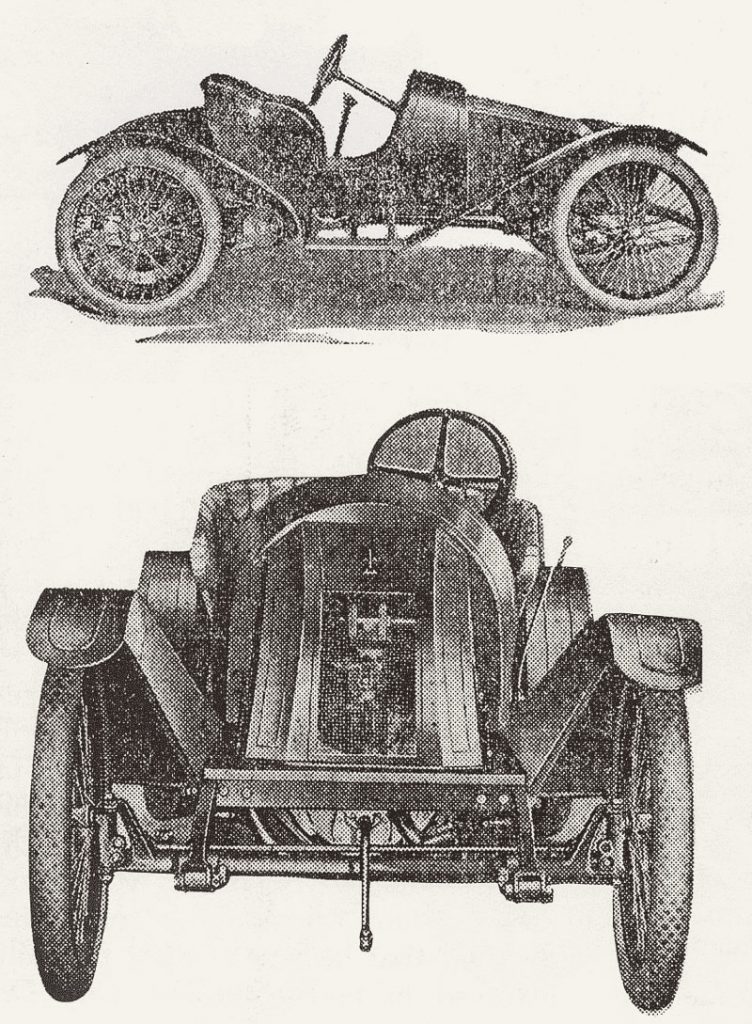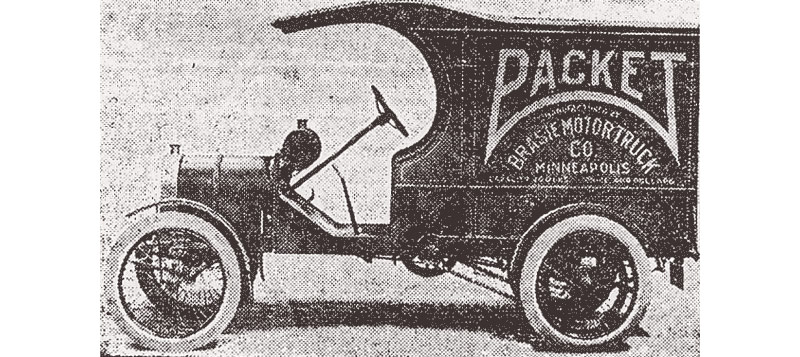
Starting from scratch, or purchasing an engine designed for stationary service, local inventors worked long hours in there basements and barns to develop their own contraptions of what came to be known as the horseless carriage, moto-buggy, motor buggy, cycle cars, or finally the automobile or car. Understandably, safety and pollution were trivial matters compared with the task of creating a vehicle witch not only ran but ran reliably. Whether powered by steam, electricity, or gasoline, all of which seemed equally practical at the turn of the century.
Before 1910 at least fifteen one of a kind vehicles had been built in Minnesota. Although assembly line production was still in the future, farseeing Minnesotans then began to consider production of cars and trucks on a duplicate or a series basis. Serious and quite successful attempts at manufacturing cars began in Minnesota around 1910, and clearly the automobile was being elevated from the toy status to that of a practical mode of transportation. By the mid-1920s more then forty-five makes of autos and trucks had been built in the state. The manufactures of some thirty of these had series production in mind. Despite this not insignificant promise, manufacture of cars and trucks by Minneapolis-based firms ceased quite abruptly soon after the mid-1920s as the competition from mass-producing automobile giants in other states became insurmountable. In the earliest days of the car, however, Minnesota had as good a chance as any of the several states of becoming a center of auto production
I am proud to say my Grandfather Anton, and great uncles Joe, Jack, and Walter Michaelson were some of the pioneers of early transportation.
Cycle cars such as the Michaelson with a tread of less than forty inches. Seating was sometimes side by side and sometimes fore and aft. During 1913 and 1914 a cycle car craze swept the country, and more than one hundred United States firms planned to produce little autos to cash in on the fad.
The Michaelson cycle car was built by the Michaelson Minneapolis Motorcycle Company, a manufacturer of motorcycles, at 526 south fifth street in Minneapolis Minnesota The most prominent member of the firm was Joe Michaelson who had designed the Minneapolis two speed motorcycle introduced in about 1908. In 1913 he and Walter Michaelson had left the Minneapolis motorcycle company to form a new company the Michaelson motor company, witch later on became the Shapiro- Michaelson company No production figures are known for the firms cyclecar, but newspaper photographs at least indicate that a prototype vehicle did exist.
Then in April of 1914 the Wilcox Motor Company bought out the company. Lee W Oldfield a well known race car driver took over as President.
Walter Michaelson resigned, to manufacture a new cyclecar. Joseph Michaelson moved on to the Brasie Motor Car Company at 2743 Lyndale Ave S. Minneapolis Minnesota. Where they made the Brasie Packet truck. Walter and Joe teamed up again to manufacture toy cannons for a period of time.
Walter went on to work for the Hielbrink Company where he was instrumental in the developing the oxygen mask that was used in aircraft.
Joe soon became involved with the production of military firearms for World War 1, primarily the.4 caliber semi-automatic pistol. During his later years Joe continuously exhibited the knowledge and skill of a master machinist who never quite gained glory from his achievements. After the war he personally designed and constructed an air-cooled, four-cylinder automobile, He also helped engineer a three-cylinder engine of radial design for the Durant Motor Company and later worked for Fuller and Johnson, manufacturers of utility gasoline engines. At the onset of World war II, his talent in the production of firearms was again used. His development and tooling of a twin-barreled, high-speed anti-aircraft gun became his greatest contribution to the war effort. The post-war era found him associated with Northern Pump Company and later, Toro Manufacturing Company where he was instrumental in the design of the modern rotary Blade mower.

